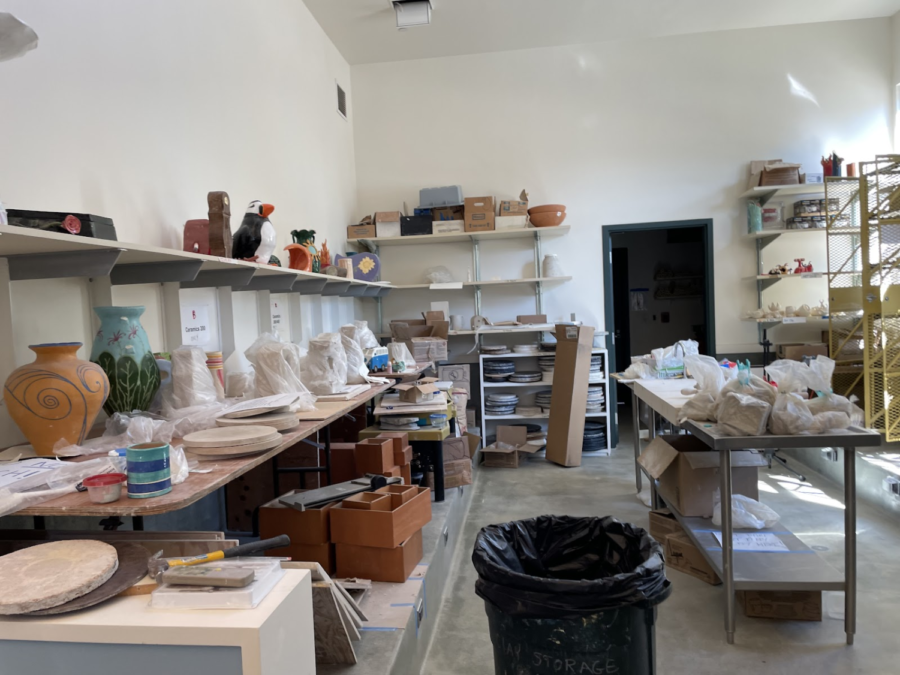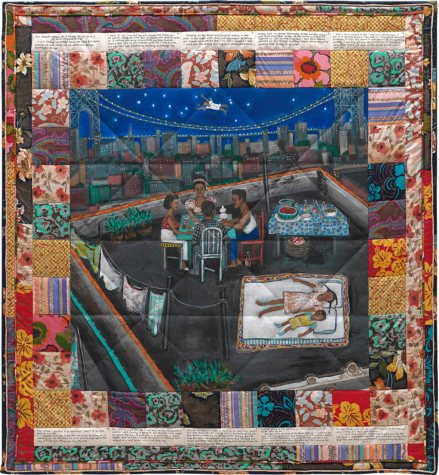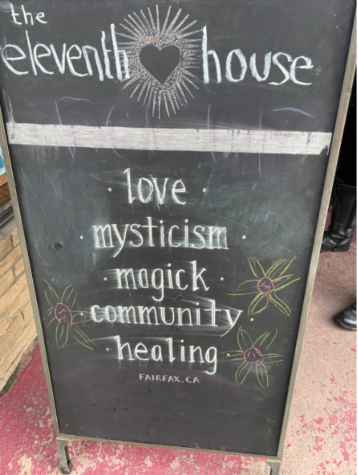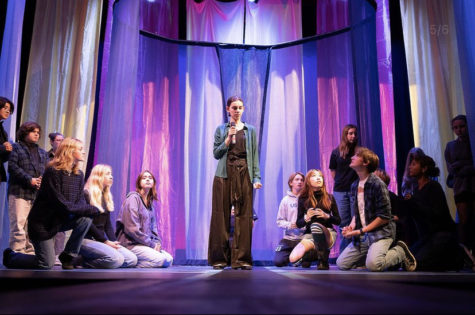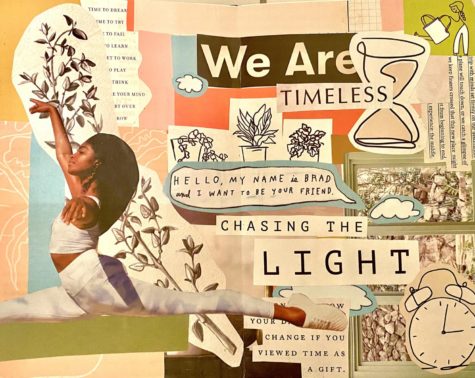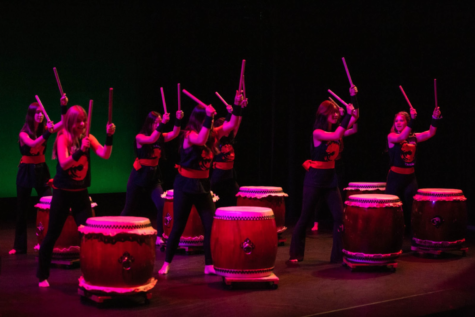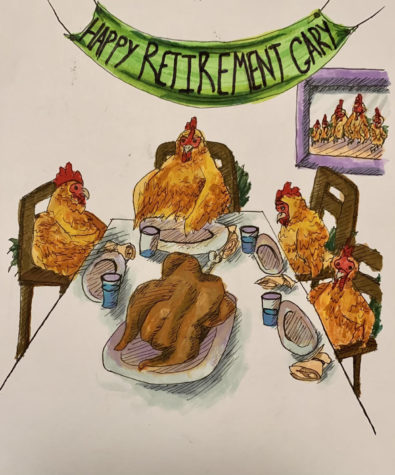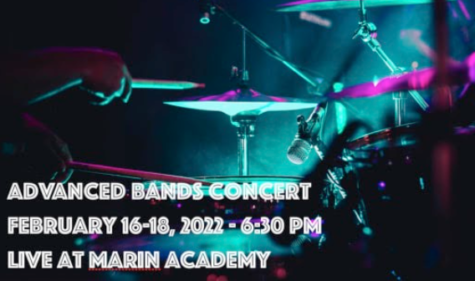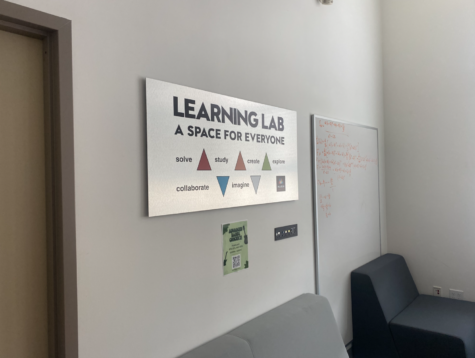Meet the MA Arts Department
October 25, 202216 Views
At MA, we all know how important the arts are, and we are lucky to have an amazing faculty and many opportunities relating to creativity and self-expression. I interviewed art teachers and students to help understand the MA Arts department, from the inside out.
I started by asking the teachers a simple question: what’s their favorite part about teaching at MA? Randee Paufve, director of the Marin Academy Dance Company, answered without hesitation, saying, “The students.” Next, I talked to Peter Walker, the Visual Arts department chair. He also spoke about the students and their confidence developing throughout the year: “Definitely the students saying, ‘I can do this, I’m an artist, I want to take another art class.’ That’s super rewarding.” Finally, David Sinako, the Performing Arts department chair, answered, “Here, the arts are a hub where connections are made between people, where we can all come together in a human rumination. It’s great to teach at a place that values your passion.” While interviewing students, I found there was a wide variety of answers across different classes, from games to deep reflections to community building. It’s clear that both the teachers and students love arts at MA.
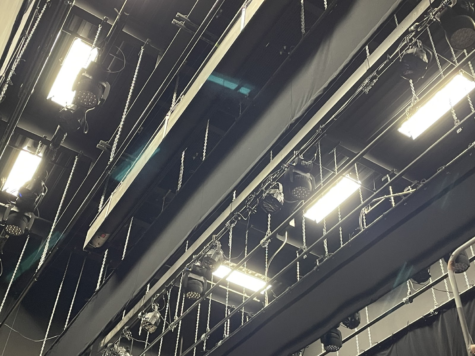
Teachers in the arts department also want to instill skills in their students beyond just technique tools. Randee said, “Open-mindedness, creativity, and problem-solving.” She also wants to make sure her students know the limitless possibilities of dance, regardless of their experience or style. Peter and David both commented on honing artistic practice through development and revision. In David’s words, “Editing is just failing better each time, until you have something to be proud of.” At MA, challenges and perseverance are integrated into every class to allow students to reach their full potential. This is aided by asking good questions, which David thinks are some of the most important parts of art. Students have learned skills like theory, technique, composition, contrast, breathing, and patience. Jiya G. ‘26 specified, “Spontaneity, listening, giving vs. taking control, and communicating with others.” Many students value these skills because they know they’ll be able to utilize them outside of art class, whether that be in personal art or just in daily life.
Getting a bit more personal, I wanted to know what inspired the arts department to start teaching. They all talked about their own personal artistic ventures, and passing that on to future generations. Randee’s been dancing since she was a kid, and eventually came back to it: “I followed a dream, really.” David believes that art is a way to understand humanity’s world, and it is vital that young people experience it. He also uses teaching as a way to share his own love for art with students and hopefully inspires them to pursue art in the future. Peter even called seeing these awakenings happening in his students, “One of the most rewarding things you can experience.” Many students say that they chose to take an art class because they want to continue to develop and grow their abilities. On the other hand, some, like Raquel R. ‘26, wanted to “expand [their] horizons and explore something new.” This proves that the department as a whole is driven by passion, curiosity, and love for the arts.
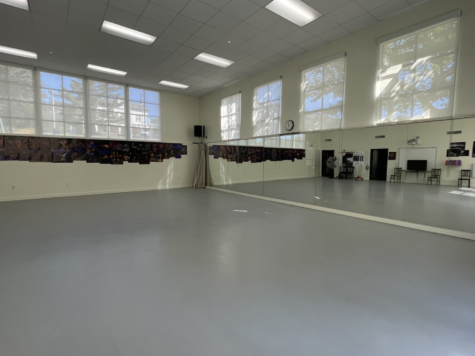
To create with such enthusiasm, the MA Arts department has a wide variety of inspirations. Human movement fascinates Randee, and she described dance as “body as the message; movement as the meaning.” She also loves how slight differences in similar motions can mean completely different things. Peter tends to use art as a mode of catharsis by responding to national cultural or political events. He compares it to therapy because his emotions can be manifested instead of bottled up inside. David thinks that anything and everything inspires art. He says, “The fact that we’re sentient beings in the world needs to be expressed. Art can express how we feel, who we are, and ‘the problem with being human.’” All three of the teachers I spoke to had very different sources of inspiration, demonstrating how vast the field of art can be. Every single one of the students I surveyed said that their friends and community inspired their art. These different mindsets truly encapsulate how diverse and inclusive MA arts are.
However, as with anything, art can be challenging. Students commonly struggle with communication with teachers or peers, as well as a lack of inspiration when put on the spot. Being in a new environment can be very difficult, as stated by Raquel R. ‘26, “It can be very intense, there’s a lot of things to pay attention to at once.” Rae M. ‘26 adds that “Mistakes in ink are irreversible, so we’ve had to roll with our errors.” Students’ perseverance through these challenges showcases how dedicated they are to their passions.
Lastly, the most important question I asked was, “What is one thing you want MA to know about the arts?” Randee said that “The faculty includes some of the most exciting, vibrant, and alive people around pursuing their passions.” Peter said that “Everybody has the capacity to create and express.” David said that “Even in a modern world with easy access to information, art is important to understand the world.” Every teacher stated,
“The MA arts department is for everyone, and everyone should engage!”
Participants: Randee Paufve, director of MADCO; Peter Walker, visual arts department chair; David Sinako, performing arts department chair; Raquel R. ‘26; Rae M. ‘26; Carys M. ‘26; Amy S. ‘26; Jiya G. ‘26; anonymous student
